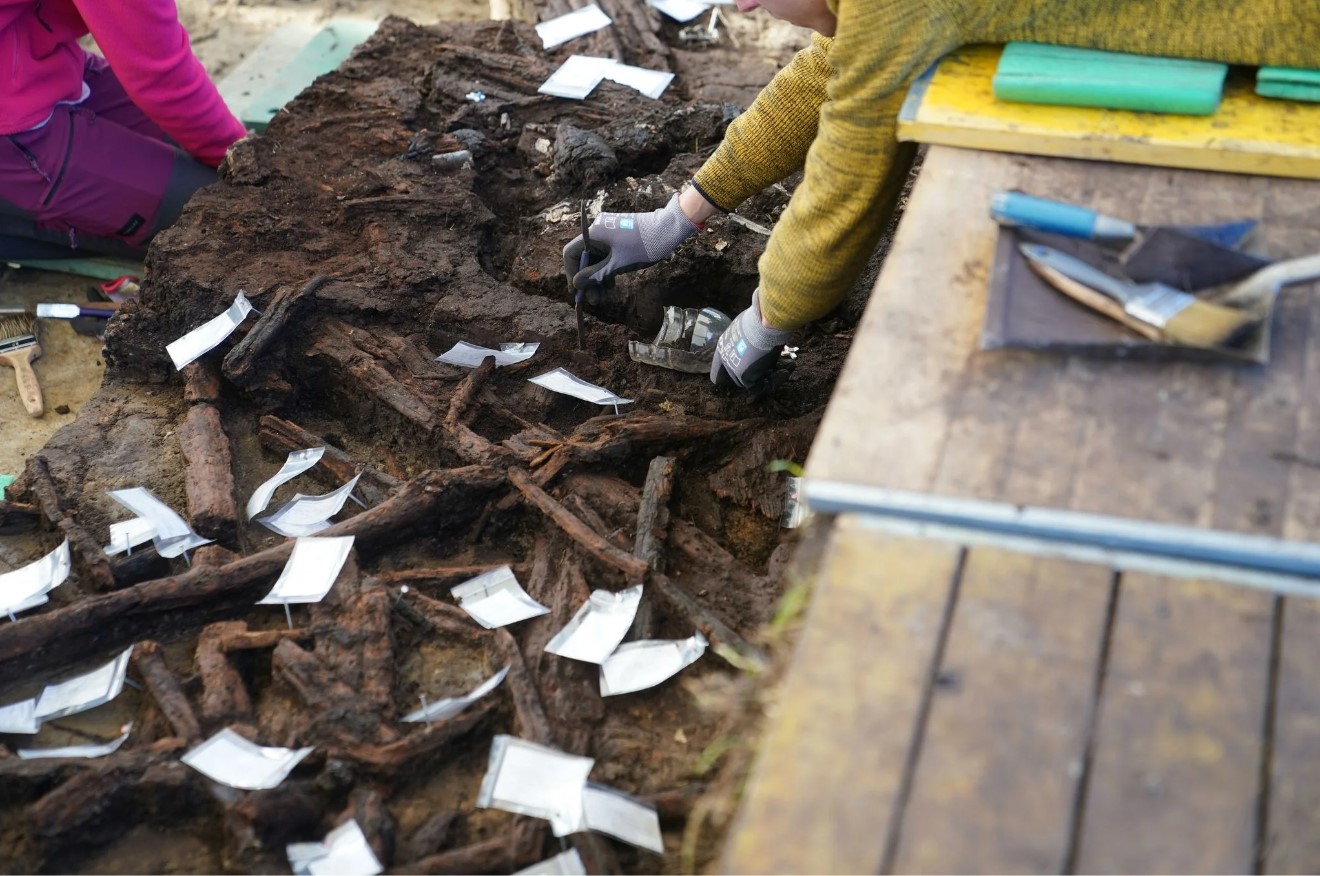The Iron Grave hid the oldest human remains in northern Germany
Categories: Nálezy nejenom s detektorem v západní Evropě

Near the German village of Lüchow, archaeologists have stumbled upon a 10,500-year-old open-hearth grave. It contains the oldest known human remains in northern Germany. They were found in the marshy area of the Duvensee Moor, which is one of the oldest and well-studied archaeological settlement areas in central Europe.
Archaeologists have been exploring Duvensee Moor repeatedly since 1923. We are deep in the then inland area," explains project director Harald Lübke. The Baltic Sea did not exist then. Where human bones have lain in the ground for thousands of years, there is now a flowering meadow. It belongs to farmer Paul Petersen.
The now 75-year-old man has been watching the excavations for decades. 30 years ago, he and his wife invited archaeologists to a barbecue. His wife, Heike, asked archaeologist Klaus Bokelmann if there was anything to be found on their property. "Whoever finds something gets a bottle of champagne," Bokelmann told his students at the time. A short time later, they returned with stone fragments. "The next day, I found a stone axe there myself, said to be 10,000 years old," Petersen added.
So far, more than 20 Mesolithic and Neolithic archaeological sites have been discovered here. The anaerobic environment of the peat bog perfectly preserves organic remains, including burnt bones. The current discovery on the edge of the moor comes from excavations by the Centre for Baltic and Scandinavian Archaeology, providing scientists with new information about human life in the area.
Recent excavations have revealed the presence of several bone fragments that were not completely burnt. The archaeologists got confirmation from an unmistakable femur. "Just the find gave us certainty," says supervisor Harald Lübke, hoping that they could extract DNA from them for subsequent research. The entire grave was raised in a soil block in situ for further study under laboratory conditions.
According to the State Archaeological Office, this is the first Mesolithic burial in Schleswig-Holstein. Experts therefore speak of the oldest grave in northern Germany. It is not yet known how Mesolithic people in the north disposed of their dead. Both finds suggest that urn burials may have been the predominant burial ritual of hunters and fishermen at the beginning of the present-day interglacial.
Hunter-gatherer-fishermen graves from the early Mesolithic are extremely rare. Earlier finds from northern Germany and southern Scandinavia are all younger (7th-6th millennium BC). The only comparable grave has been found in Jutland, Denmark. It is also an urn burial, suggesting that cremation may have been prevalent among Mesolithic hunter-gatherers.
"It's a sensation for me," Lübke said. He and his colleagues hope the find will give them more information about how Mesozoic hunters, fishermen and gatherers treated their dead. They have found various human bones on the moor, but so far no sign of a skull. Lübke hopes to use them to extract DNA: "That would be a real treasure trove."
So far, the oldest known North German urn grave has only raised a lot of questions. "In the case of burnt bones, for example, it is difficult to determine the cause of death," Lübke said. The entire Duvensee Moor area is a great location for archaeologists: "We have now opened a new door here. And beyond that, for the moment, there are only dark rooms."
Archaeological work will continue here next year.
Roman Nemec
Sources: zeit.de, sueddeutsche.de
The article is included in categories: